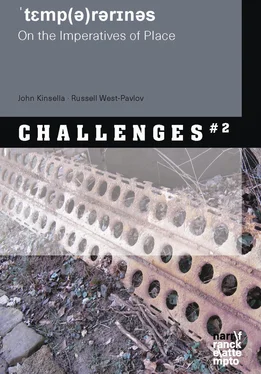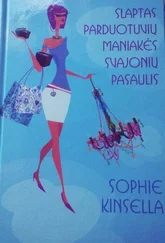RWP
Atomic Swans, Neckar River, Germany
River rising out of Black Forest is the river
you walked past and will walk past again, again,
Neckar rising and falling all the way to the Rhine
at industrial Mannheim, flowing with swan
families keeping zones, maintaining half lives
in the dip of seasonal sheddings and re-applications,
wingspread to hold warmth, to harbour
the cores of their legacies, codes we stumble
around, taking photos. And then, downriver
from Tübingen, on a train to Stuttgart,
later approaching Kirchheim, across
the waters, hook of the river, swans familiar
but different, chain of being, or reaction
against corruption of fundamentals.
Across there, summer family, Schwäne,
Gemeinschaftskernkraftwerk, GK N2
with its hybrid cooling tower suppressed
volcano eruptive as the Börse Frankfurt
doesn’t want to be, steady steady
goes the hebephrenic—broody reactor
in its oven nest reminds you of Frost’s
‘American’ ovenbird, but this can’t be enclosed
in a sonnet reactor vessel, can’t be shielded
against its wild prosody when life goes on
and on all around, cheap land for wealthier than-
usual families who don’t maintain
anxious states, who let the becquerels
wash over them in health denial.
The big flood of extra warm water
in 2004, the heating river with happy
expanding fish, the Simpsons laugh-off
at mutating presence, those drones
out of Stuttgart, the ongoing states
of warfare. Wonder if the mines in Western
Australia on stolen land stealing spirits
and unbalancing will feed its last years,
the swans’ white labours in the wastes,
the ‘historic hiking path’, the respect
a Mayor has for tradition and rites
of way, trek on to Heidelberg escorted
through the plant by ‘guard and German
shepherd’. Matrix of traversal. Swan spectres.
Wondering how people could live within
a few hundred metres of the plant, of Unit 2
itself, how? Benign as ‘Wouldn’t know anyway’,
and ‘Better dying first than lingering longer
being further away’. Quid pro quo choice
exchange not likely to rouse as much interest
as Boris Becker’s financial solvency or Bernard
Tomic’s ‘un-Australian’ statement of fact: ‘little bit bored’,
shattering a sponsor’s illusions of a too busy to
notice enculturation. Radiation gets places,
works its way in, speaks its mind. And white swans
mute and full of voice, the songs of culture pledge
benefits of plant, and company’s people-skills,
localising instillation. Benefits. Privileges.
Of ‘German Engineering’. Safe as houses.
But what do flight and song and Hölderlin
have to do with violence of matter, of a split
in the forest’s fabric, the potatoes bulging
in the fields right up to the ramparts,
tours through a ‘sterile’ environment:
clean is unseen. So who’s to watch CNN
on atomic television, or atomic rail past steam
rising or the quiet hum of plant transpiration?
These networks of empowerment, these liberations
of carbon futures, carbon credit slaughterhouse?
Incongruous change of tone, shiftback phonemes,
almost passive observation recollection
data collation—stay safe within the poem.
All these voices that make schematics, make
policy for energy to cloak the wor(l)d, to screensave
and dilate our spectres. Late day travelling
past, even in summer light with the risk
of a shower, your swans show the way,
cygnets trailing, blazing a generational
pathway; for no Reactor Birds are alone
for long, and even diminishing, register
strong—what does it mean outside
the ancient sources, the languages
that have gone into making up the grid?
And to cap it off, waste from elsewhere
arrived on a barge, a ghost-train passes
on the other side, on the far bank, shielding you?
Or—later, later—on the intercity express from Mannheim
to Frankfurt, the ball in play, everything in motion,
the Rhine enabling Biblis plant, the Rhine in role
of co-dependent , the Rhine regurgitating loops leaks
breaks quad cooling tower symmetry to placate
Unit A and Unit B pressurised water reactors,
gloriously twinned with Balakovo’s pride,
ovens warming to swan silhouettes, a Lotte
Reiniger manic design Ordnung, the Neckar
warm water merged with the Rhine warm water
fed as wedding party bliss! O, but stymied with decommission,
that slow trek towards non-existence as if it never was,
wish-fulfilment a trace in cabbage fields. But good ol’ GKN2
back up the tributary will stay hot under its collar!
True, true... Neckarwestheim is not on the railway
but from across the river you join its pseudo
symbiosis with plant, with the history
of atomic birds: Höckerschwan, Graureiher,
Bussard, Kohlmeise, Gartenbaumläufer,
and with lists keening through glass
you absorb becquerels to add to your stockpile,
weaponised psyche to expand human
consciousness, ingenuity of refusal and acceptance
gathering as the train slows at Kirchheim,
Neckar still rising out of the Black Forest far back,
as you always travel facing forward if given a choice.
These zero-sum gains in which spectral swans
are winners averting glances, GPS propositions.
JK

The residues of the military trying to keep a firm footing on ground they’ve disturbed, disrupted, brutalised, are a reminder and an affirmation of their failure to hold what they’ve appropriated, no matter how ‘resilient’ their technology. The ‘essential’ nature of manganese for not only anti-rust qualities, but also its qualities of shock reduction on steel, made it a deeply desired commodity in World War II, and the desire lines lead to the ‘neutrality’ of Sweden (Swedish ships carried and protected German ore shipments during the war) and, say, the Artillery Mountains in Arizona. Manganese mines, like all mines, are places of great natural and cultural disturbance. The exploitation—new waves of colonisation—of African ‘resources’, including manganese, developed multifold during World War II. All intermediaries between the earth and our feet, between the earth and objects of human design—the ‘conductive superhighways’ of the false anthropology—create a buffer that can only be permeable. A common sight in rural areas around the world is the degraded macadam that has been defeated by ‘weeds’ and tree saplings, breaking through, remaking habitat. The reclamation of steel matting of many wars and false wars, a reclaiming into the domestic porousness of forest not as monopolised capitalist-military resource, but as a place of nature in which humans are also nature, is a pragmatic dissolution of the vicariousness of conflict and violence, of the sundering of earth to conductivity. All wars are won or lost depending on lines of supply and communication. The matting allows vehicles to move where they couldn’t move of their own volition, or where they would be impaired in the usual movement. Tracked vehicles incorporate their own ‘matting’, of course, but even these sometimes require the extra ‘footing’ matting provides. And now the matting that fitted together so readily and efficiently is moving as if compelled by itself, and not by the military. A life, maybe, outside conflict—an absorbing of the less destructible into the forest, into the dwelling of ‘hippies’, into the liminal spaces of the forest-edge dwellers. In the personal essay we are often ‘reminded of’ and draw analogies because we wish to frame the run of words and yet make it porous enough for ‘us’ to dip out and re-enter at will. This matting is necessary for the act of reading to ‘walk’ over the textual roadway laid down to enable the journey we think we require when beginning a text and imagining its possible ends. And in this spirit, yet another ploy, I am reminded of living in ‘the shack’ in the cow paddocks on the edge of the creek deep in the southwest of Australia, a few kms outside Bridgetown, with marri forest edging nearby, and a giant colonial walnut in the vicinity of the shack. And mud. In winter, it rains heavily and gets muddy. And in the same way turbulence is on the increase due to climate change, and aviation thinkers are trying to out-think the conundrum of flying through what is increasingly difficult to fly through, their machines contributing strongly to the cause of the effect, so too the erratic weather patterns over the southwest produce erratic dries and wets, and the earth underfoot behaves in unpredictable ways. But when I/ we lived there, it was muddy in ‘winter’ and we laid hessian sacks on the ground outside the front porch (an unlockable ‘front door’, and no back door at all), to relieve the abjection and to make passage to the vegetable garden more practical, and to the toilet which consisted of a steel drum of high manganese content with a wooden seat above it so you’d hover over a pit of excrement, to be covered in lime after heavy usage. The sacks had been used for ASW wheat, which wasn’t grown in any quantity around there, but was grown to the northwest of the district in vast amounts over vast areas—areas I was more familiar with. The sacks had been acquired elsewhere and brought in, though we had no car and only walked places or hitchhiked. I cannot recall how we got the sacks there, so the designed usage was consigned to the temporary, and a pragmatic reinvention of use put into action. But more planned than one might think. I’d seen the sacks used for this up around farms throughout my childhood. The sacks were a little resistant to mud, but not particularly—the fibre grew sodden. Eventually the mud soaked through, to join deposits from our feet, to fuse. Walking the forest around the Wankheimer Täle with Russell, I was fascinated by the residues of an old stone road he showed me. We took many photos of the stones, our own feet, the dry mud around them. I didn’t find it abject, but my feet were well shod. The stones were fixed, and had likely been so for hundreds of years, but they were intrusions likely of the place into the place, a looping intervention but also continuity. Walking, we might wonder a-priori and know they must appear where the track becomes difficult, where it descends from field to forest. These objects with human defintion calling up experience. A complex array of presence and habitat. A challenge to the temporary, in the way all ‘time’ is inevitable and terminal and will demand its end (and, for that matter, all time is present in the moment, the singularity—ends and beginnings are relative terms). But this is really a rhetorical ploy, because in the spatial maze there are only dead ends (which become a propaganda of ‘beginnings’), and not a ‘solution’ encompasses reaching an emanating, enlightening ‘centre’ (which merely tells you that you have been on a journey). And the journey is as continuous as time which is contained within the singularity of the moment—a drawn point containing many if not all points. Thus our compulsion to make narratives of journeys, of a walk from a to b. It is a story of all time and no time, of a very specific (if meandering) route, and all space (the infinite numbers of points between points).The matting is a paradox. The matting will always move, and, indeed, it was designed to do just that. But it also moves against its design purpose, and in doing so mocks the violence and industry that prompted its creation. Conservative ‘red pill/blue pill’ Matrix binaries are served by the matting—we can seek knowledge and its consequences, or remain blissfully ignorant. But bliss and knowledge are so intimately connected that the binary is rendered absurd before it is made. The matting is not a binary, or even part of a binary, but a recognition that even the most violent human constructs are subject to the ‘inevitable temporality’ of ‘nature’, that the materials of its making are the material it is deployed to control. An absurdity. A theatre of self-loathing. The discursive essay has to break down into ramblings and let the mud through while retaining its trajectory, its ability to move through and over rough terrain, contrive its narratives of self-preservation. Or as the rhetorical ‘or does it?’ transports us rhizomically and atmospherically over the same land without damage. Termites scaffold their food externally and internally—and they feed the earth as they eat a tree’s deadwood. The tunnels in a termite mound, the tunnels of digested material through the dead centre of the log, are the matting created and possessed without war being enacted. The termites’ is an essay as form without violence.
Читать дальше













